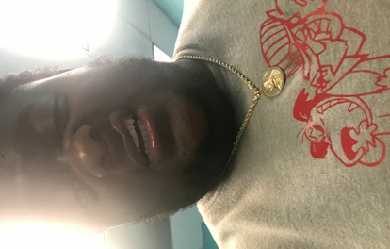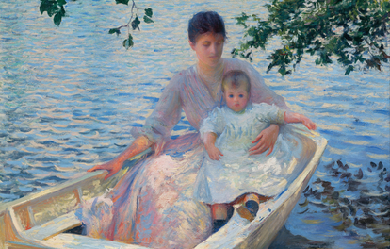
Info


Horatius Bonar (19 December 1808– 31 July 1889), a contemporary and acquaintance of Robert Murray M’cheyne was a Scottish churchman and poet. He is principally remembered as a prodigious hymn-writer. Life The son of James Bonar, Solicitor of Excise for Scotland, he was born and educated in Edinburgh. He came from a long line of ministers who have served a total of 364 years in the Church of Scotland. One of eleven children, his brothers John James and Andrew Alexander were also ministers of the Free Church of Scotland. He had married Jane Catherine Lundie in 1843 and five of their young children died in succession. Towards the end of their lives, one of their surviving daughters was left a widow with five small children and she returned to live with her parents. In 1853 Bonar earned the honorary degree of Doctor of Divinity from the University of Aberdeen. Bonar’s wife, Jane Catherine Bonar, died in 1876. He died at this home, 10 Palmerston Road in the Grange, 31 July 1889. They are buried together in the Canongate Kirkyard in the lair of Alexander Bonar, near the bottom of the eastern extension. Service He entered the Ministry of the Church of Scotland. At first he was put in charge of mission work at St. John’s parish in Leith and settled at Kelso. He joined the Free Church at the time of the Disruption of 1843, and in 1867 was moved to Edinburgh to take over the Chalmers Memorial Church (named after his teacher at college, Dr. Thomas Chalmers). In 1883, he was elected Moderator of the General Assembly of the Free Church of Scotland. Works * He was a voluminous and highly popular author. He also served as the editor for “The Quarterly journal of Prophecy” from 1848 to 1873 and for the “Christian Treasury” from 1859 to 1879. In addition to many books and tracts wrote a number of hymns, many of which, e.g., “I heard the voice of Jesus say” and “Blessing and Honour and Glory and Power,” became known all over the English-speaking world. A selection of these was published as Hymns of Faith and Hope (3 series). His last volume of poetry was My Old Letters. Bonar was also author of several biographies of ministers he had known, including “The Life of the Rev. John Milne of Perth” in 1869, and in 1884 “The Life and Works of the Rev. G. T. Dodds”, who was married to Bonar’s daughter and who died in 1882 while serving as a missionary in France. * His hymns, which number over 140, include: * All That I Was * Fill thou my life, O Lord, my God * I heard the Voice of Jesus say * I Was a Wandering Sheep * Thy way, not mine, O Lord * Here, O my Lord, I see Thee face to face * A few more years shall roll * Come Lord and tarry not * O love of God, how strong and true * Some of his books include: * Words to Winners of Souls. Nabu Press. 2011. ISBN 978-1-24772-723-3. * The Everlasting Righteousness. Banner of Truth. 1996. ISBN 978-0-85151-655-4. * God’s Way of Holiness. Christian Focus Publications. 1999. ISBN 978-1-85792-503-6. * How Shall I Go to God. Baker Book House. 1977. ISBN 978-0-8010-0713-2. * Night of Weeping. Christian Focus Publications. 1999. ISBN 978-1-85792-441-1. * God’s Way of Peace ISBN 1-4590-9630-4 * Follow the Lamb ISBN 0-906731-63-1 * Light & Truth: Bible Thoughts and Themes on The Acts & Larger Epistles– commentary on Acts, Romans, and 1 Corinthians and 2 Corinthians ASIN B002ZJRS9K * Light & Truth: Bible Thoughts and Themes on Revelation - commentary on the Book of Revelation ASIN B002ZRQ55U References Wikipedia—https://en.wikipedia.org/wiki/Horatius_Bonar

I am an aspiring poet and aspiring DJ. I love to listen to music (particularly EDM). I frequently listen to several podcasts of it as well as keep up with the latest music within the genre every week and I love it so much. I am currently looking for a couple of jobs to help me save and purchase some equipment to kickstart my career.
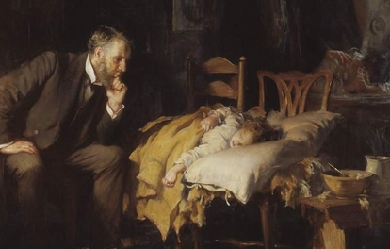

Robert Seymour Bridges, OM (23 October 1844– 21 April 1930) was Britain’s poet laureate from 1913 to 1930. A doctor by training, he achieved literary fame only late in life. His poems reflect a deep Christian faith, and he is the author of many well-known hymns. It was through Bridges’ efforts that Gerard Manley Hopkins achieved posthumous fame. Personal and professional life Bridges was born in Walmer, Kent, in England, and educated at Eton College and Corpus Christi College, Oxford. He went on to study medicine in London at St Bartholomew’s Hospital, intending to practise until the age of forty and then retire to write poetry. He practised as a casualty physician at his teaching hospital (where he made a series of highly critical remarks about the Victorian medical establishment) and subsequently as a full physician to the Great (later Royal) Northern Hospital. He was also a physician to the Hospital for Sick Children. Lung disease forced him to retire in 1882, and from that point on he devoted himself to writing and literary research. However, Bridges’ literary work started long before his retirement, his first collection of poems having been published in 1873. In 1884 he married Monica Waterhouse, daughter of Alfred Waterhouse R.A., and spent the rest of his life in rural seclusion, first at Yattendon, then at Boars Hill, Berkshire, where he died. He was elected to the Fellowship of the Royal College of Physicians of London in 1900. He was appointed Poet Laureate in 1913, the only medical graduate to have held the office. He was the father of poet Elizabeth Daryush. Literary work As a poet Bridges stands rather apart from the current of modern English verse, but his work has had great influence in a select circle, by its restraint, purity, precision and delicacy yet strength of expression. It embodies a distinct theory of prosody. Bridges’ faith underpinned much of his work. In the book Milton’s Prosody, he took an empirical approach to examining Milton’s use of blank verse, and developed the controversial theory that Milton’s practice was essentially syllabic. He considered free verse to be too limiting, and explained his position in the essay “Humdrum and Harum-Scarum”. His own efforts to “free” verse resulted in the poems he called “Neo-Miltonic Syllabics”, which were collected in New Verse (1925). The metre of these poems was based on syllables rather than accents, and he used the principle again in the long philosophical poem The Testament of Beauty (1929), for which he received the Order of Merit. His best-known poems, however, are to be found in the two earlier volumes of Shorter Poems (1890, 1894). He also wrote verse plays, with limited success, and literary criticism, including a study of the work of John Keats. Bridges’ poetry was privately printed in the first instance, and was slow in making its way beyond a comparatively small circle of his admirers. His best work is to be found in his Shorter Poems (1890), and a complete edition (to date) of his Poetical Works (6 vols.) was published in 1898-1905. Despite being made poet laureate in 1913, Bridges was never a very well-known poet and only achieved his great popularity shortly before his death with The Testament of Beauty. However, his verse evoked response in many great British composers of the time. Among those to set his poems to music were Hubert Parry, Gustav Holst and later Gerald Finzi. During the First World War, Bridges joined the group of writers assembled by Charles Masterman as part of Britain’s War Propaganda Bureau at Wellington House. At Oxford, Bridges became friends with Gerard Manley Hopkins, who is now considered a superior poet but who owes his present fame to Bridges’ efforts in arranging the posthumous publication (1918) of his verse. Bridges received advice from the young phonetician David Abercrombie on the reformed spelling system he was devising for the publication of his collected essays (later published in seven volumes by Oxford University Press, with the help of the distinguished typographer Stanley Morison, who designed the new letters). Thus Robert Bridges contributed to phonetics and he was also a founder member of the Society for Pure English. Hymnody Bridges made an important contribution to hymnody with the publication in 1899 of his Yattendon Hymnal, which he created specifically for musical reasons. This collection of hymns, although not a financial success, became a bridge between the Victorian hymnody of the last half of the 19th century and the modern hymnody of the early 20th century. Bridges wrote and also translated historic hymns, and many of these were included in Songs of Syon (1904) and the later English Hymnal (1906). Several of Bridges’ hymns and translations are still in use today: “Thee will I love, my God and King” “Happy are they that love God” “Rejoice, O land, in God thy might” The Baptist Hymn Book, University Press, Oxford 1962 “Ah, Holy Jesus” (Johann Heermann, 1630) “All My Hope on God Is Founded” (Joachim Neander, c. 1680) “Jesu, Joy of Man’s Desiring” (Martin Jahn, 1661) “O Gladsome Light” (Phos Hilaron) “O Sacred Head, sore wounded” (Paulus Gerhardt, 1656) “O Splendour of God’s Glory Bright” (Ambrose, 4th century) “When morning gilds the skies” (stanza 3; Katholisches Gesangbuch, 1744) Major works * Dates given are of first publication and significant revisions. Poetry collections * The Growth of Love (1876; 1889; 1898), a sequence of (24; 79; 69) sonnets * Prometheus the Firegiver: A Mask in the Greek Manner (1883) * Eros and Psyche: A Narrative Poem in Twelve Measures (1885; 1894), a story from the Latin of Apuleius * Shorter Poems, Books I–IV (1890) * Shorter Poems, Books I–V (1894) * New Poems (1899) * Demeter: A Mask (1905), performed 1904 * Ibant Obscuri: An Experiment in the Classical Hexameter (1916), with reprint of summary of Stone’s Prosody, accompanied by 'later observations & modifications’ * October and Other Poems (1920) * The Tapestry: Poems (1925), in neo-Miltonic syllabics * New Verse (1926), includes verse of The Tapestry * The Testament of Beauty (1929) Verse drama * Nero (1885), an historical tragedy; called The First Part of Nero subsequent to the publication of Nero: Part II * The Feast of Bacchus (1889); partly translated from the Heauton-Timoroumenos of Terence * Achilles in Scyros (1890), a drama in a mixed manner * Palicio (1890), a romantic drama in five acts in the Elizabethan manner * The Return of Ulysses (1890), a drama in five acts in a mixed manner * The Christian Captives (1890), a tragedy in five acts in a mixed manner; on the same subject as Calderón’s El Principe Constante * The Humours of the Court (1893), a comedy in three acts; founded on Calderón’s El secreto á voces and on Lope de Vega’s El Perro del hortelano * Nero, Part II (1894) Prose * Milton’s Prosody, With a Chapter on Accentual Verse (1893; 1901; 1921), based on essays published in 1887 and 1889 * Keats (1895) * Hymns from the Yattendon Hymnal (1899) * The Spirit of Man (1916) * Poems of Gerard Manley Hopkins (1918), edited with notes by R.B. * The Necessity of Poetry (1918) * Collected Essays, Papers, Etc. (1927–36) References Wikipedia—https://en.wikipedia.org/wiki/Robert_Bridges
Believe and have Faith in your life. Live it the way God has written it within the pages of YOUR book. Bring alive the story that is for you to run free and for everyone else to read. My favorite thing in life is making EVERY moment a memory. The voice coming from your heart shows more than the fiction of the mind.- Rachael Busjahn

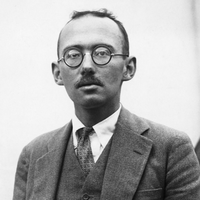
Stephen Vincent Benét /bᵻˈneɪ/ (July 22, 1898– March 13, 1943) was an American author, poet, short story writer, and novelist. Benét is best known for his book-length narrative poem of the American Civil War, John Brown’s Body (1928), for which he won a Pulitzer Prize in 1929, and for two short stories, “The Devil and Daniel Webster” (1936) and “By the Waters of Babylon” (1937). In 2009, The Library of America selected Benét’s story “The King of the Cats” (1929) for inclusion in its two-century retrospective of American Fantastic Tales, edited by Peter Straub. Life and career Early life Benét was born in Bethlehem, Pennsylvania to James Walker Benét, a colonel in the United States Army, and his wife. His grandfather and namesake was a Minorcan descendant born in St. Augustine, Florida, who led the U.S. Army Ordnance Corps, 1874–1891, with the rank of brigadier general; he was a graduate of the United States Military Academy and served in the American Civil War. The younger Benét’s paternal uncle, Laurence Vincent Benét, a graduate of Yale, was an ensign in the United States Navy during the Spanish–American War and later manufactured the French-Hotchkiss machine gun. At about age ten, Benét was sent to the Hitchcock Military Academy. He graduated from The Albany Academy in Albany, New York and Yale University, where he was “the power behind the Yale Lit”, according to Thornton Wilder, a fellow member of the Elizabethan Club. He also edited and contributed light verse to campus humor magazine The Yale Record. Benét published his first book at age 17. He was awarded an M.A. in English upon submission of his third volume of poetry in lieu of a thesis. Benét was also a part-time contributor for the early Time magazine. In 1920-1921 he went to France on a Yale traveling fellowship. There he met Rosemary Carr, whom he married in Chicago in November 1921. Carr was also a writer and poet, and they collaborated on some works. Man of letters Benét helped solidify the place of the Yale Series of Younger Poets Competition and the Yale University Press during his decade-long judgeship of the competition. Benét published the first volumes of James Agee, Muriel Rukeyser, Jeremy Ingalls, and Margaret Walker. He was elected a Fellow of the American Academy of Arts and Sciences in 1931. Benét’s fantasy short story about a devil, The Devil and Daniel Webster (1936) won an O. Henry Award. He furnished the material for Scratch, a one-act opera by Douglas Moore. The story was filmed in 1941 and shown originally under the title All That Money Can Buy. Benét also wrote a sequel, Daniel Webster and the Sea Serpent, in which the man Daniel Webster encounters the Leviathan of biblical legend. Young Benét lived in a home (commonly referred to as Benét House), in Augusta, Georgia. Part of Augusta College (now Georgia Regents University), it was declared a National Historic Landmark in 1971. Benet House, now on the Summerville Campus of Georgia Regents University, was originally part of the Augusta Arsenal. Benet’s father, Col James Walker Benet, along with his wife and daughter, lived in this house while he was the commanding officer of the Augusta Arsenal from approximately August 1911 to February 1919. Stephen Vincent Benet would have visited his parents while they were resident. The local newspaper considered it newsworthy enough to congratulate Benet on winning the Maysfield Prize for best undergraduate poem while Benet attended Yale.(Augusta Chronicle 1/21/1917 p. 21) Benet House was the name assigned to the building when it became the property of Augusta College. Once the residence of the college president, it now serves as space for administrative offices. Benet House was declared a National Historic Landmark in 1971. Death and legacy Benét died of a heart attack in New York City, on March 13, 1943, at the age of 44 and was buried in Evergreen Cemetery in Stonington, Connecticut, where he had owned the historic Amos Palmer House. On April 17, 1943, NBC broadcast a special tribute to the life and works of Benét, which included a performance by Helen Hayes. He was awarded a posthumous Pulitzer Prize in 1944 for Western Star, an unfinished narrative poem on the settling of the United States. The title of Dee Brown’s Bury My Heart at Wounded Knee, a history of Native Americans in the American West in the late nineteenth century, is taken from the final phrase of Benét’s poem “American Names”. The full quotation, "I shall not be there/I shall rise and pass/Bury my heart at Wounded Knee," appears at the beginning of Brown’s book. Benet’s poem is not about the plight of Native Americans, and Benet would have been unlikely to approve of the author’s tendentious approach. Wounded Knee, a village on the Pine Ridge Indian reservation in Oglala Lakota County, South Dakota, was the location of the last major confrontation between the U.S. Army and Native Americans. The event is known formally as the Wounded Knee Massacre, as more than 150 Sioux men, women, and children who were largely unarmed were killed that day. He adapted the Roman myth of the rape of the Sabine Women into the story “The Sobbin’ Women”. It was adapted as the movie musical Seven Brides for Seven Brothers. His play John Brown’s Body was staged on Broadway in 1953, in a three-person dramatic reading featuring Tyrone Power, Judith Anderson, and Raymond Massey, and directed by Charles Laughton. The book of the same name was included in Life Magazine’s list of the 100 outstanding books of 1924–1944. Benét fathered three children: Thomas, Stephanie, and Rachel. His brother, William Rose Benét, was a poet, anthologist and critic who is largely remembered for his desk reference Benet’s Reader’s Encyclopedia (1948). His sister Laura Benét was also an author. Selected works * Five Men and Pompey, a series of dramatic portraits, Poetry, 1915 * The Drug-Shop, or, Endymion in Edmonstoun (Yale University Prize Poem), 1917 * Young Adventure: A book of Poems, 1918 * Heavens and Earth, 1920 * The Beginnings of Wisdom: A Novel, 1921 * Young People’s Pride: A Novel, 1922 * Jean Huguenot: A Novel, 1923 * The Ballad of William Sycamore: A Poem, 1923 * King David: A two-hundred-line ballad in six parts, 1923 * Nerves, 1924 (A play, with John Farrar) * That Awful Mrs. Eaton, 1924 (A play, with John Farrar) * Tiger Joy: A Book of Poems, 1925 * The Mountain Whippoorwill: How Hill-Billy Jim Won the Great Fiddler’s Prize: A Poem., 1925 * Spanish Bayonet, 1926 * John Brown’s Body, 1928 * The Barefoot Saint: A Short Story, 1929 * The Litter of Rose Leaves: A Short Story, 1930 * Abraham Lincoln, 1930 (screenplay with Gerrit Lloyd) * Ballads and Poems, 1915–1930, 1931 * A Book of Americans, 1933 (with Rosemary Carr Benét, his wife) * James Shore’s Daughter: A Novel, 1934 * The Burning City, 1936 (includes 'Litany for Dictatorships’) * The Magic of Poetry and the Poet’s Art, 1936 * By the Waters of Babylon, 1937 * The Headless Horseman: one-act play, 1937 * Thirteen O’Clock, 1937 * Johnny Pye and the Fool Killer: A Short Story, 1938 * Tales Before Midnight: Collection of Short Stories, 1939 * The Ballad of the Duke’s Mercy, 1939 * Elementals, 1940–41 (broadcast) * Freedom’s Hard-Bought Thing, 1941 (broadcast) * Listen to the People, 1941 * A Summons to the Free, 1941 * Cheers for Miss Bishop, 1941 (screenplay with Adelaide Heilbron, Sheridan Gibney) * Selected Works, 1942 (2 vols.) * Short Stories, 1942 * Nightmare at Noon: Short Poem, 1942 (in The Treasury Star Parade, ed. by William A. Bacher) * A Child is Born, 1942 (broadcast) * They Burned the Books, 1942 * They Burned the Books, 1942 (broadcast) * These works were published posthumously: * Western Star, 1943 (unfinished) * Twenty Five Short Stories, 1943 * America, 1944 * O’Halloran’s Luck and Other Short Stories, 1944 * We Stand United, 1945 (radio scripts) * The Bishop’s Beggar, 1946 * The Last Circle, 1946 * Selected Stories, 1947 * From the Earth to the Moon, 1958 References Wikipedia—https://en.wikipedia.org/wiki/Stephen_Vincent_Benét
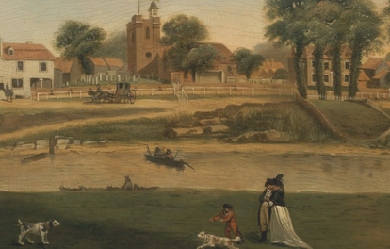
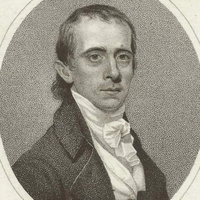
Robert Bloomfield (3 December 1766– 19 August 1823) was an English labouring class poet whose work is appreciated in the context of other self-educated writers such as Stephen Duck, Mary Collier and John Clare. Life Robert Bloomfield was born of a poor family in the village of Honington, Suffolk. His father was a tailor and died of smallpox when the son was a year old. It was from his mother Elizabeth, who kept the village school, that he received the rudiments of education. Apprenticed at the age of eleven to his mother’s brother-in-law, he worked on a farm which was part of the estate of the Duke of Grafton, his future patron. Four years later, owing to his small and weak stature (in adulthood Bloomfield was just five feet tall) he was sent to London to work as a shoemaker under his elder brother George. One of his early duties was to read the papers aloud while the others in the workshop were working and he became particularly interested in the poetry section of The London Magazine. He had his first poem, “The Village Girl”, published in 1786. When his brother George returned to Suffolk in that year, he set up on his own as a cobbler and in 1790 married Mary Ann Church, by whom he was to have five children. The poem that made his reputation, The Farmer’s Boy, was composed in a garret in Bell Alley, Coleman Street. It was influenced by James Thomson’s poem The Seasons. Bloomfield was able to carry some fifty to a hundred finished lines of it in his head at a time until there was opportunity to write them down. The manuscript was declined by several publishers and was eventually shown by his brother George to Capel Lofft, a radical Suffolk squire of literary tastes, who arranged for its publication with woodcuts by Thomas Bewick in 1800. The success of the poem was remarkable, over 25,000 copies being sold in the next two years. Also reprinted in several American editions, it appeared in German translation in Leipzig, translated into French as Le Valet du Fermier in Paris, and in Italian translation in Milan; there was even a Latin translation of parts of it, De Agricolae Puero, Anglicano Poemate celeberrimo excerptum, et in morem Latini Georgice redditum, by the lively Suffolk vicar William Clubbe. The poem was particularly admired by the Suffolk-born painter John Constable who used couplets from it as tags to two paintings: a 'Ploughing Scene’ (shown at the Royal Academy in 1814) and 'A Harvest Field, Reapers, Gleaners’ (shown at the British Institution in 1817), which he noted as deriving from 'Bloomfield’s poem’. It was also admired by Robert Southey, a Romantic poet and future poet laureate. While this success helped reduce his poverty for a while, it also took him away from his work. As a result, the Duke of Grafton, who lived at Euston Hall near the village of Bloomfield’s birth, settled on him a small annuity of £15 and used his influence to gain him employment in the Seal Office to the King’s Bench Court and then at Somerset House, but he worked in neither for long. Meanwhile, Bloomfield’s reputation was increased by the appearance of his Rural Tales (1802), several poems of which were set to music by his brother Isaac. Another of them, “The Miller’s Maid”, was made an opera by John Davy (1763–1824) in 1804 and formed the basis for a two-act melodrama by John Faucit Saville (1807–1855) in 1821. Other publications by Bloomfield included Good Tidings (written in praise of inoculation at the instigation of Edward Jenner, 1804); Wild Flowers or Pastoral and Local Poetry (1806); and The Banks of the Wye (the poetic journal of a walking tour in the footsteps of Wordsworth, 1811). Unfortunately Vernor and Hood, his publishers, went bankrupt and in 1812 Bloomfield was forced to move from London into a cottage rented to him by a friend in the Bedfordshire village of Shefford. There one of his daughters died in 1814 and his wife became insane. In order to support himself he tried to carry on business as a bookseller but failed, and in his later years was reduced to making Aeolian harps which he sold among his friends. With failing eyesight, his own reason threatened by depression, he died in great poverty on 19 August 1823. In order to pay his debts and cover the funeral expenses, his collection of books and manuscripts, and his household effects, had to be auctioned. Allied to this fund-raising was the publication that year of his drama, Hazlewood Hall, and in the following year of The Remains of Robert Bloomfield, which included writing for children on which he had been working for some years and a selection of his correspondence. Poetry Bloomfield’s poetry invites comparison with that of George Crabbe, who was also a native of Suffolk. Both wrote much in iambic pentameter couplets, both provide descriptions of rural life in its hardest and least inviting forms. Bloomfield, however, is more cheerful in tone and his verse is denser and more vigorous. Here, for instance, is the episode in “The Farmer’s Boy” where Giles chops up turnips to feed the livestock in winter: On GILES, and such as Giles, the labour falls, To strew the frequent load where hunger calls. On driving gales sharp hail indignant flies, And sleet, more irksome still, assails his eyes; Snow clogs his feet; or if no snow is seen, The field with all its juicy store to screen, Deep goes the frost, till every root is found A rolling mass of ice upon the ground. No tender ewe can break her nightly fast, Nor heifer strong begin the cold repast, Till Giles with pond’rous beetle foremost go, And scatt’ring splinters fly at every blow; When pressing round him, eager for the prize, From their mixt breath warm exhalations rise. However, such verse is little varied from that of many of Bloomfield’s contemporaries, such as James Montgomery and Ebenezer Elliot whose names, like his, were well known in their time but are scarcely remembered now. Besides such formal productions, he told many light-hearted stories in octosyllabics, some of which are interesting for their employment of Suffolk dialect words, particularly in “The Horkey”. His work served as an inspiration to John Clare, who began publishing his own rural poetry in 1820 and praised Bloomfield’s highly. Robert’s brother, Nathaniel, also published a collection of poetry in 1803, An Essay on War, in Blank Verse, and Other Poems. Byron commented on the brothers in English Bards and Scotch Reviewers (lines 775-86), linking Robert’s name favourably with other poets of humble beginnings such as Burns and Gifford but dismissing Nathaniel’s writing as routine and uninspired. Byron returned to the charge in Hints from Horace with the apostrophe Hark to those lines, narcotically soft, The cobbler-laureats sing to Capel Lofft! (lines 733-4) Although a note makes it clear than Nathaniel is his principal target, he also seems to include 'his brother Bobby’ in the accusation that Lofft 'has spoiled some excellent shoemakers and been accessory to the poetic undoing of many of the industrious poor’. Later Reputation In 1973 Shefford’s secondary school was converted to a middle school (for pupils aged 9–13) and named after the poet. In 2000 the Robert Bloomfield Society was founded to promote awareness of his life and work and has encouraged scholarly publications relating to him. A revised and enlarged selection of his poems was published by Trent Editions in 2007. Recent studies of his poetry evaluate it within its social as well as its literary context. References Wikipedia—https://en.wikipedia.org/wiki/Robert_Bloomfield

I USE POETRY TO ESCAPE REALITY ! its also very interesting to read and here other peoples opinions on it i am the age of 15 and have an amazing boyfriend who actually told me to make this account and post some of my poems please no hate comments I really DON'T need that have a nice day -Katelynn Dawn Boots

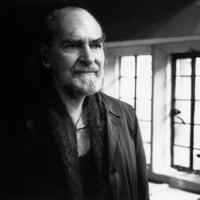
Basil Cheesman Bunting (1 March 1900– 17 April 1985) was a significant British modernist poet whose reputation was established with the publication of Briggflatts in 1966. He had a lifelong interest in music that led him to emphasise the sonic qualities of poetry, particularly the importance of reading poetry aloud. He was an accomplished reader of his own work. Life and career Born into a Quaker family in Scotswood-on-Tyne, Northumberland, he studied at two Quaker schools: from 1912 to 1916 at Ackworth School in the West Riding of Yorkshire and from 1916 to 1918 at Leighton Park School in Berkshire. His Quaker education strongly influenced his pacifist opposition to the First World War, and in 1918 he was arrested as a conscientious objector having been refused recognition by the tribunals and refusing to comply with a notice of call-up. Handed over to the military, he was court-martialled for refusing to obey orders, and served a sentence of more than a year in Wormwood Scrubs and Winchester prisons. Bunting’s friend Louis Zukofsky described him as a "conservative/anti-fascist/imperialist", though Bunting himself listed the major influences on his artistic and personal outlook somewhat differently as “Jails and the sea, Quaker mysticism and socialist politics, a lasting unlucky passion, the slums of Lambeth and Hoxton ...” These events were to have an important role in his first major poem, “Villon” (1925). “Villon” was one of a rather rare set of complex structured poems that Bunting labelled “sonatas,” thus underlining the sonic qualities of his verse and recalling his love of music. Other “sonatas” include “Attis: or, Something Missing,” “Aus Dem Zweiten Reich,” “The Well of Lycopolis,” “The Spoils” and, finally, “Briggflatts.” After his release from prison in 1919, traumatised by the time spent there, Bunting went to London, where he enrolled in the London School of Economics, and had his first contacts with journalists, social activists and Bohemia. Bunting was introduced to the works of Ezra Pound by Nina Hamnett who lent him a copy of Homage to Sextus Propertius. The glamour of the cosmopolitan modernist examples of Nina Hamnett and Mina Loy seems to have influenced Bunting in his later move from London to Paris. After travelling in Northern Europe, Bunting left the London School of Economics without a degree and went to France. There, in 1923, he became friendly with Ezra Pound, who years later would dedicate his Guide to Kulchur (1938) to both Bunting and Louis Zukofsky, “strugglers in the desert”. Between February and October 1927, Bunting wrote articles and reviews for The Outlook, and then became its music critic until the magazine ceased publication in 1928. Bunting’s poetry began to show the influence of the friendship with Pound, whom he visited in Rapallo, Italy, and later settled there with his family from 1931 to 1933. He was published in the Objectivist issue of Poetry magazine, in the Objectivist Anthology, and in Pound’s Active Anthology. During the Second World War, Bunting served in British Military Intelligence in Persia. After the war, in 1948, he left government service to become the correspondent for The Times of London, in Iran. He married an Iranian woman– Sima Alladian– whilst continuing his intelligence work with the Anglo-Iranian Oil Company Tehran, until he was expelled by Mohammad Mossadegh in 1952. Back in Newcastle, he worked as a journalist on the Evening Chronicle until his rediscovery during the 1960s by young poets, notably Tom Pickard and Jonathan Williams, who were interested in working in the modernist tradition. In 1965, he published his major long poem, Briggflatts, named after the Quaker village in Cumbria where he is now buried. In later life he published Advice to Young Poets, beginning "I SUGGEST / 1. Compose aloud; poetry is a sound.” Bunting died in 1985 in Hexham, Northumberland. The Basil Bunting Poetry Award and Young Person’s Prize, administered by Newcastle University, are open internationally to any poet writing in English. Briggflatts Divided into five parts, Briggflatts is an autobiographical long poem, looking back on teenage love and on Bunting’s involvement in the high modernist period. In addition, Briggflatts can be read as a meditation on the limits of life and a celebration of Northumbrian culture and dialect, as symbolised by events and figures like the doomed Viking King Eric Bloodaxe. The critic Cyril Connolly was among the first to recognise the poem’s value, describing it as “the finest long poem to have been published in England since T. S. Eliot’s Four Quartets”. Portrait bust of Basil Bunting Basil Bunting sat in Northumberland for sculptor Alan Thornhill, with a resulting terracotta (for bronze) in existence. The correspondence file relating to the Bunting portrait bust is held as part of the Thornhill Papers (2006:56) in the archive of the Henry Moore Foundation’s Henry Moore Institute in Leeds and the terracotta remains in the collection of the artist. The 1973 portrait is displayed in the Burton (2014) biography of Bunting. In popular culture Mark Knopfler wrote a song, titled 'Basil’, about his time as a Saturday afternoon copy boy on the Newcastle Evening Chronicle when Bunting worked there. The song was recorded for Knopfler’s 2015 album Tracker. Books * 1930: Redimiculum Matellarum (privately printed) * 1950: Poems (Cleaners’ Press, 1950) revised and published as Loquitur (Fulcrum Press, 1965). * 1951: The Spoils * 1965: First Book of Odes * 1965: Ode II/2 * 1966: Briggflatts: An Autobiography * 1967: Two Poems * 1967: What the Chairman Told Tom * 1968: Collected Poems * 1972: Version of Horace * 1991: Uncollected Poems (posthumous, edited by Richard Caddel) * 1994: The Complete Poems (posthumous, edited by Richard Caddel) * 1999: Basil Bunting on Poetry (posthumous, edited by Peter Makin) * 2000: Complete Poems (posthumous, edited by Richard Caddel) * 2009: Briggflatts (with audio CD and video DVD) * 2012: Bunting’s Persia (Translations by Basil Bunting. Edited by Don Share) References Wikipedia—https://en.wikipedia.org/wiki/Basil_Bunting

I'm 17 years old. I lost my mother to stage 4 breast cancer almost 3 years ago in June 2011. I started writing poetry in freshman year, after I got an assignment to write a Shakespearean sonnet. I got high praise, so I decided to write more. Not all of my poems rhyme and some are still in the process of being checked over and revised. I love poetry because it is an outlet for me and helps me convey how I feel through my words when I can't show it through emotions. I hope that you will enjoy my work and I will check out yours. Thanks. :)
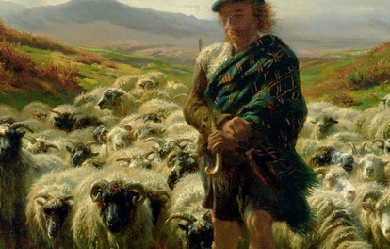

James Beattie FRSE (/ˈbiːti/; 25 October 1735– 18 August 1803) was a Scottish poet, moralist and philosopher. Life James Beattie was born the son of a shopkeeper and small farmer at Laurencekirk in the Mearns, and educated at Marischal College (later part of Aberdeen University), graduating in 1753. In 1760, he was appointed Professor of moral philosophy there as a result of the interest of his intimate friend, Robert Arbuthnot of Haddo. In the following year he published a volume of poems, The Judgment of Paris (1765), which attracted attention. The two works, however, which brought him most fame were An Essay on the Nature and Immutability of Truth, and his poem of The Minstrel. The Essay, intended as an answer to David Hume, had great immediate success, and led to an introduction to the King, a pension of £200, and the degree of LL.D. from Oxford. The first book of The Minstrel was published in 1771 and the second in 1774, and constitutes his true title to remembrance, winning him the praise of Samuel Johnson. It contains much beautiful descriptive writing. Beattie was prominent in arguing against the institution of slavery, notably in his Essay on the Nature and Immutability of Truth (1770) and Elements of Moral Science. Beattie was an amateur cellist and member of the Aberdeen Musical Society. He considered questions of music philosophy in his essay On Poetry and Music (written 1762, published 1776), which was republished several times and translated into French in 1798. His poem “The Hermit” was set to music by Tommaso Giordani (1778). Beattie was co-founder of the Royal Society of Edinburgh in 1783. Beattie underwent much domestic sorrow in the death of his wife, Mary Dunn, whom he had married in 1767, and two promising sons, which broke down his own health and spirits. He died in Aberdeen in 1803 and is buried there in St Nicholas’ Churchyard. Recognition A biographical sketch, An Account of the Life of James Beattie, LL.D., was published in 1804 by Alexander Bower. The poet Robert Burns informed Mrs Frances Dunlop in a letter that the idea of using Coila as the name of his poetic muse first came to him from Beattie’s use of a muse named 'Scota’ in his Scots language poem of 1768 titled To Mr Alexander at Lochlee. Beattie is one of the sixteen Scottish poets and writers depicted on the Scott Monument on Princes Street in Edinburgh. He appears on the left side of the east face. Works * Original Poems and Translations (1760) * The Judgement of Paris (1765) * Poems on Several Subjects (1766) * An Essay on the Nature and Immutability of Truth (1770) * The Minstrel; or, The Progress of Genius (1771/2) two volumes * Essays, on the nature and immutability of truth in opposition to sophistry and scepticism. On poetry and music as they affect the mind. On laughter and ludicrous composition. On the utility of classical learning (1776) * Essays on Poetry (1778) * Scoticisms, Arranged in Alphabetical Order, Designed to Correct Improprieties of Speech and Writing (1779) * Poems on several occasions (1780) * Dissertations Moral and Critical (1783) * The Evidence of the Christian Religion Briefly and Plainly Stated (1786) 2 vols. * The theory of language. Part I. Of the origin and general nature of speech. Part II. Of universal grammar (1788) * Elements of Moral Science (1790–1793) two volumes * The Poetical Works of James Beattie (1831) edited by A. Dyce * The poetical works of Beattie, Blair, and Falconer (1868) edited by Charles Cowden Clarke * James Beattie’s Day-Book, 1773-1778 (1948) edited by R. S. Walker * James Beattie’s Diary (1948) edited by R. S. Walker References Wikipedia—https://en.wikipedia.org/wiki/James_Beattie_(poet)

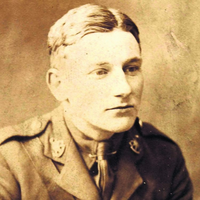
Edmund Charles Blunden, CBE, MC (1 November 1896– 20 January 1974) was an English poet, author and critic. Like his friend Siegfried Sassoon, he wrote of his experiences in World War I in both verse and prose. For most of his career, Blunden was also a reviewer for English publications and an academic in Tokyo and later Hong Kong. He ended his career as Professor of Poetry at the University of Oxford. Biography Early years and World War I Born in London, Blunden was the eldest of the nine children of Charles Edmund Blunden (1871–1951) and his wife, Georgina Margaret née Tyler, who were joint-headteachers of Yalding school. Blunden was educated at Christ’s Hospital and The Queen’s College, Oxford. In August 1915 Blunden was commissioned as a second lieutenant in the Royal Sussex Regiment and served with them right up to the end of World War I, taking part in the actions at Ypres and the Somme, and receiving the Military Cross in the process. Unusually for a junior infantry officer, Blunden survived nearly two years in the front line without physical injury, but for the rest of his life bore mental scars from his experiences. With characteristic self-deprecation he attributed his survival to his diminutive size: he made “an inconspicuous target”. His own account of his frequently traumatic experiences was published in 1928 under the title Undertones of War. Career as a writer Blunden left the army in 1919 and took up the scholarship at Oxford that he had won while still at school. On the same English Literature course was Robert Graves, and the two were close friends during their time at Oxford together, but Blunden found university life unsatisfactory and left in 1920 to take up a literary career, at first acting as assistant to Middleton Murry on the Athenaeum. An early supporter was Siegfried Sassoon, who became a lifelong friend. In 1920 Blunden published a collection of poems, The Waggoner, and with Alan Porter edited the poems of John Clare (mostly from Clare’s manuscript). Blunden’s next book of poems, The Shepherd, published in 1922 won the Hawthornden Prize, but his poetry, though well reviewed, did not provide enough to live on, and in 1924 he accepted the post of Professor of English at the University of Tokyo. He returned to England in 1927, and was literary editor of the Nation for a year. In 1927 he published a short book, On the Poems of Henry Vaughan, Characteristics and Intimations, with his principal Latin poems carefully translated into English verse (London: H. Cobden-Sanderson, 1927), expanding and revising an essay that he had published in November 1926 in the London Mercury. In 1931 he returned to Oxford as a Fellow of Merton College, where he was highly regarded as a tutor. During his years in Oxford, Blunden published extensively: several collections of poetry including Choice or Chance (1934) and Shells by a Stream (1944), prose works on Charles Lamb; Edward Gibbon; Keats’s publisher; Percy Bysshe Shelley (Shelley: A Life Story); John Taylor; and Thomas Hardy; and a book about a game he loved, Cricket Country (1944). He returned to full-time writing in 1944, becoming assistant editor of The Times Literary Supplement. In 1947 he returned to Japan as a member of the British liaison mission in Tokyo. In 1953, after three years back in England he accepted the post of Professor of English Literature at the University of Hong Kong. Blunden retired in 1964 and settled in Suffolk. In 1966 he was nominated for the Oxford Professorship of Poetry in succession to Robert Graves; with some misgivings he agreed to stand and was elected by a large majority over the other candidate, Robert Lowell. However, he now found the strain of public lecturing too much for him, and after two years he resigned. He died of a heart attack at his home at Long Melford, Suffolk, on 20 January 1974, and is buried in the churchyard of Holy Trinity Church, Long Melford. Personal life Blunden was married three times. While still in the army he met and married Mary Daines in 1918. They had three children, the first of whom died in infancy. They divorced in 1931, and in 1933 Blunden married Sylva Norman, a young novelist and critic. That marriage, which was childless, was dissolved in 1945, and in the same year he married Claire Margaret Poynting (1918-2000), a former pupil of his; they had four daughters. While in Japan in the summer of 1925, he met Aki Hayashi, with whom he began a relationship. When Blunden returned to England in 1927, Aki accompanied him and would become his secretary. The relationship later changed from a romantic one to a platonic friendship, and they remained in contact for the rest of her life. Blunden’s love of cricket, celebrated in his book Cricket Country, is described by the biographer Philip Ziegler as fanatical. Blunden and his friend Rupert Hart-Davis regularly opened the batting for a publisher’s eleven in the 1930s (Blunden insisted on batting without gloves). An affectionate obituary tribute in The Guardian commented, “He loved cricket... and played it ardently and very badly”, while in a review of Cricket Country, George Orwell described him as “the true cricketer”: The test of a true cricketer is that he shall prefer village cricket to 'good’ cricket [.... Blunden’s] friendliest memories are of the informal village game, where everyone plays in braces, where the blacksmith is liable to be called away in mid-innings on an urgent job, and sometimes, about the time when the light begins to fail, a ball driven for four kills a rabbit on the boundary. In a 2009 appreciation of the book and its author, Bangalore writer Suresh Menon writes, Any cricket book that talks easily of Henry James and Siegfried Sassoon and Ranji and Grace and Richard Burton (the writer, not the actor) and Coleridge is bound to have a special charm of its own. As Blunden says, “The game which made me write at all, is not terminated at the boundary, but is reflected beyond, is echoed and varied out there among the gardens and the barns, the dells and the thickets, and belongs to some wider field.” Perhaps that is what all books on cricket are trying to say. Blunden had a robust sense of humour. In Hong Kong he relished linguistic misunderstandings such as those of the restaurant that offered “fried prawn’s balls” and the schoolboy who wrote, “In Hong Kong there is a queer at every bus-stop.” His fellow poets’ regard for Blunden was illustrated by the contributions to a dinner in his honour for which poems were specially written by Cecil Day-Lewis and William Plomer; T. S. Eliot and Walter de la Mare were guests; and Siegfried Sassoon provided the Burgundy. Honours Blunden’s public honours included the C.B.E., 1951; the Queen’s Gold Medal for Poetry, 1956; The Royal Society of Literature’s Benson Medal; the Order of the Rising Sun, 3rd Class (Japan), 1963; and Honorary Membership of the Japan Academy. On 11 November 1985, Blunden was among 16 Great War poets commemorated on a slate stone unveiled in Poets’ Corner in Westminster Abbey The inscription on the stone was written by fellow Great War poet, Wilfred Owen. It reads: “My subject is War, and the pity of War. The Poetry is in the pity.” Works * = * Blunden’s output was prolific. To those who thought he published too much he quoted Walter de la Mare’s observation that time was the poet’s best editor. His books of poetry include Poems 1913 and 1914 (1914); Poems Translated from the French (1914); Three Poems (1916); The Barn (1916); The Silver Bird of Herndyke Mill; Stane Street; The Gods of the World Beneath, (1916); The Harbingers (1916); Pastorals (1916); The Waggoner and Other Poems (1920); The Shepherd, and Other Poems of Peace and War (1922); Old Homes (1922); To Nature: New Poems (1923); Dead Letters (1923); Masks of Time: A New Collection of Poems Principally Meditative (1925); Japanese Garland (1928); Retreat (1928); Winter Nights: A Reminiscence (1928); Near and Far: New Poems (1929); A Summer’s Fancy (1930); To Themis: Poems on Famous Trials (1931); Constantia and Francis: An Autumn Evening, (1931); Halfway House: A Miscellany of New Poems, (1932); Choice or Chance: New Poems (1934); Verses: To H. R. H. The Duke of Windsor, (1936); An Elegy and Other Poems (1937); On Several Occasions (1938); Poems, 1930–1940 (1940); Shells by a Stream (1944); After the Bombing, and Other Short Poems (1949); Eastward: A Selection of Verses Original and Translated (1950); Records of Friendship (1950); A Hong Kong House (1959); Poems on Japan (1967). * Artists Rifles, an audiobook CD published in 2004, includes a reading of Concert Party, Busseboom by Blunden himself, recorded in 1964 by the British Council. Other Great War poets heard on the CD include Siegfried Sassoon, Edgell Rickword, Robert Graves, David Jones and Lawrence Binyon. Blunden can also be heard on Memorial Tablet, an audiobook of readings by Sassoon issued in 2003. References Wikipedia—https://en.wikipedia.org/wiki/Edmund_Blunden
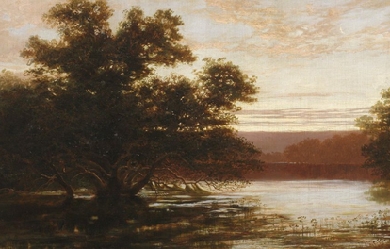
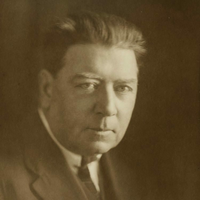
Christopher John Brennan (1 November 1870– 5 October 1932) was an Australian poet and scholar. Biography Brennan was born in Sydney, to Christopher Brennan (d. 1919), a brewer, and his wife Mary Ann née Carroll (d. 1924), both Irish immigrants. His education took place at two schools in Sydney: he first attended St Aloysius’ College, and after gaining a scholarship from Patrick Moran, he boarded at St Ignatius’ College, Riverview. Brennan entered the University of Sydney in 1888, taking up studies in the Classics, and won a travelling scholarship to Berlin. There he met his future wife, Anna Elisabeth Werth; there, also, he encountered the poetry of Stéphane Mallarmé. About this time, he decided to become a poet. In 1893 Brennan’s article “On the Manuscripts of Aeschylus” appeared in the Journal of Philology, Brennan began forming a theory about the descent of Aeschylus’ extant manuscripts in 1888. Returning to Australia, Brennan took up a position as a cataloguer in the public library, before being given a position at the University of Sydney. In 1914, he produced his major work, Poems: 1913. After Brennan’s marriage broke up in 1922, he went to live with Violet Singer, the 'Vie’ of his later poems, and, as a result of both his divorce and increasing drunkenness, he was removed from his position at the University in June 1925. The death of Singer in an accident left him distraught, and he spent most of his remaining years in poverty. Brennan died in 1932 from cancer. Legacy Brennan influenced Australian writers of his own generation and many who succeeded him, including R. D. Fitzgerald, A.D. Hope, Judith Wright and James McAuley. In remembrance, the Fellowship of Australian Writers established the Christopher Brennan Award which is presented annually to an Australian poet, recognising a lifetime achievement in poetry. Brennan Hall and Library at St John’s College within the University of Sydney, the Christopher Brennan building in the University’s Arts Faculty, and the main library at Saint Ignatius’ College, Riverview are named in his honour. Bibliography * Sir Roger de Coverley, Selections from The Spectator (Sydney: Turner and Henderson, 1892). Edited with: A. B. Piddington. * XVIII Poems: Being the First Collection of Verse and Prose (Sydney: privately stylographed, 1897). * XXI Poems: MDCCCXCIII-MDCCCXCVII: Towards the Source (Sydney: Angus and Robertson, 1897). * Fact and Idea (Sydney: Govt. Printer, 1899). * From Blake to Arnold: Selections from English Poetry, 1783–1853 (London: Macmillan, 1900). Edited with: J. P. Pickburn & J. Le Gay Brereton. * A Mask (Sydney: Sydney U. Women’s College, 1913). With: J. Le Gay Brereton. * Poems (Sydney: G. B. Philip and Son, 1914). * Passages for Translation into French and German (London: Oxford University Press, 1914). Compiled with: G. G. Nicholson. * A Chant of Doom: and Other Verses (Sydney: Angus and Robertson, 1918). * Twenty Three Poems (Sydney: Australian Limited Editions Society, 1938). * The Burden of Tyre (Sydney: Harry F. Chaplin, 1953). * The Verse of Christopher Brennan ed. by A. R. Chisholm and J. J. Quinn (Sydney: Angus and Robertson, 1960). * The Prose of Christopher Brennan ed. by A. R. Chisholm and J. J. Quinn (Sydney: Angus and Robertson, 1962). * Selected Poems of Christopher Brennan (Sydney: Angus and Robertson, 1965). Ed. by: A. R. Chisholm. * Selected Poems of Christopher Brennan (Sydney: Angus and Robertson, 1973). Ed. by: G. A. Wilkes. * Prose-Verse-Poster-Algebraic-Symbolico-Riddle Musicopoematographoscope & Pocket Musicopoematographoscope (Erskineville, NSW: Hale and Iremonger, 1981). Ed. by: Axel Clark. * Christopher Brennan ed. by Terry Sturm (St. Lucia, Qld: U. of Queensland Press, 1984). * 13 Poems (Pearl Beach, NSW: Escutcheon Press, 1987). Ed. by: R. E. Summers. * Interludes: Six Poems (Pearl Beach, NSW: Escutcheon Press, 1991). * Christopher Brennan: Introduction suivie de 12 poèmes– textes et traductions– avec commentaires ([S.l.]: L’Harmattan, 2005). Ed. and trans.: Simone Kadi. * The Autumnal Glory of Valvins: Christopher Brennan on Mallarmé (Banora Point: Wind and Wave Press, 2007). Ed. by: Phillip A. Ellis. * Like a Dream of Stone: Selected Verse Translations by Christopher Brennan (Banora Point: Wind and Wave Press, 2007). Ed. by: Phillip A. Ellis. References Wikipedia—https://en.wikipedia.org/wiki/Christopher_Brennan
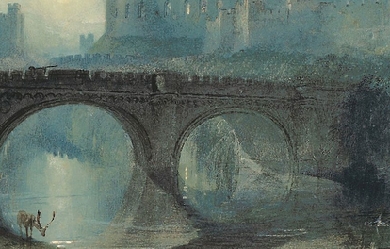

Francis William Bourdillon (22 March 1852 at Runcorn, Cheshire– 13 January 1921 at Buddington, Midhurst) was a British poet and translator. He is known also as bibliophile and scholar. Life Born in Runcorn, Cheshire, he was the eldest son of Rev. Francis Bourdillon, the author, at that time perpetual curate of Runcorn. He was educated at Haileybury College and Worcester College, Oxford, graduating B.A. 1877, M.A. 1882. From 1876 to 1879, he acted as tutor to the sons of Prince Christian of Schleswig-Holstein. Later Bourdillon lived in Eastbourne, and near Midhurst, Sussex. His friends included Audrey Boyle (1853/4–1916), later as wife of Hallam Tennyson, 2nd Baron Tennyson known as Audrey Lady Tennyson. Writer Bourdillon is known for his poetry, and in particular for the single short poem “The Night Has a Thousand Eyes”. He had many collections published, including Among The Flowers, And Other Poems (1878), Minuscula: lyrics of nature, art and love (1897, siftings of three smaller volumes of verse published anonymously at Oxford in 1891, 1892, and 1894), Gerard and Isabel: a Romance in Form of Cantefable (1921), and also Chryseis, and Preludes and Romances (1908). In 1896 he published Nephelé, a romantic novel. He translated Aucassin et Nicolette as Aucassin and Nicolet (1887), and he wrote the scholarly The Early Editions of the Roman de la Rose (1906) as well as Russia Reborn (1917) and various essays which the Religious Tract Society published. Family Bourdillon married Agnes Smyth, and they lived at Buddington, near Midhurst. They had three children. References Wikipedia—https://en.wikipedia.org/wiki/Francis_William_Bourdillon

I love to read and write. I am in 6th grade so I'm really very young. I've always loved to write and when I found this website I thought I could let my inner feelings show a little more. Facts About Myself: -I like anime. (Hetalia specifically.) -I love the colors Royal Blue and Lavender. -I'm more of a back-crowd person as I put it. -I come off as very intimidating for my age so I don't have many friends. -I do ballet and soccer. That's all I'm giving out about myself so goodbye!!! ~^_^~
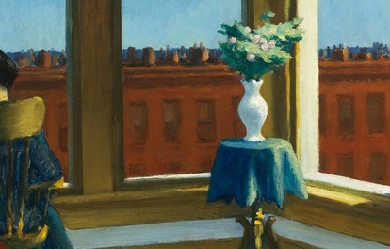
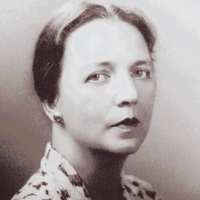
Louise Bogan (August 11, 1897– February 4, 1970) was an American poet. She was appointed the fourth Poet Laureate to the Library of Congress in 1945. As poetry editor of The New Yorker magazine for nearly 40 years, Bogan played a major role in shaping mainstream poetic sensibilities of the mid-20th Century. The Poetry Foundation notes that Bogan has been called by some critics the most accomplished woman poet of the twentieth century. It further notes that, “Some critics have placed her in a category of brilliant minor poets described as the ”reactionary generation." This group eschewed the prevailing Modernist forms that would come to dominate the literary landscape of the era in favor of more traditional techniques. Dictionary of Literary Biography contributor Brett C. Millier named Bogan “one of the finest lyric poets America has produced,” and added that “the fact that she was a woman and that she defended formal, lyric poetry in an age of expansive experimentation made evaluation of her work, until quite recently, somewhat condescending.” Biography Early years Bogan was born in Livermore Falls, Maine, where her father, Daniel Bogan, worked for various paper mills and bottling factories. She spent most of her childhood years with her parents and brother growing up in mill towns in Maine, New Hampshire, and Massachusetts, where she and her family lived in working-class hotels and boardinghouses until 1904. With the help of a female benefactor, Bogan was able to attend the Girls’ Latin School for five years, which eventually gave her the opportunity to attend Boston University. In 1916, after only completing her freshman year and giving up a fellowship to Radcliffe, she left the university to marry Curt Alexander, a corporal in the U.S. Army, but their marriage ended in 1918. Bogan moved to New York to pursue a career in writing, and their only daughter, Maidie Alexander, was left under the care of Bogan’s parents. After her first husband’s death in 1920, she left and spent a few years in Vienna, where she explored her loneliness and her new identity in verse. She returned to New York City and published her first book of poetry, Body of This Death: Poems, in 1923, meeting that year the poet and novelist Raymond Holden. They were married by 1925. Four years later, she published her second book of poetry, Dark Summer: Poems, and shortly after was hired as a poetry editor for The New Yorker. She was divorced from Holden in 1937. Career Bogan’s poetic style was unlike that of Ezra Pound or T. S. Eliot. Suzanne Clark, an English professor from the University of Oregon, stated that Bogan often refers to her female speakers as “the locus of intemperate, dangerous, antisocial desires.” This coincides with the notion that Bogan brought a different perspective to the traditional viewpoint of women. Not only was it difficult being a female poet in the 1930s and 1940s, but her lower-middle-class Irish background and limited education also brought on much ambivalence and contradiction for Louise Bogan. She even refused to review women poets in her early career and stated, “I have found from bitter experience that one woman poet is at a disadvantage in reviewing another, if the review be not laudatory.” Bogan did not discuss intimate details of her life (and disdained such confessional poets as Robert Lowell and John Berryman). Most of her work was published before 1938. This includes Body of This Death (1923), Dark Summer (1929), and The Sleeping Fury (1937). She also translated works by Ernst Jünger, Goethe, and Jules Renard. Later in Bogan’s life, a volume of her collected works, The Blue Estuaries: Poems 1923-1968, was published with such poems as “The Dream” and “Women.” In late 1969, shortly before her death, she ended her thirty-eight year career as a reviewer for The New Yorker, stating, “No more pronouncements on lousy verse. No more hidden competition. No more struggling not to be a square.” One of her admirers was W. H. Auden. Her poetry was published in The New Republic, The Nation, Poetry: A Magazine of Verse, Scribner’s, and Atlantic Monthly. Her Collected Poems: 1923-1953 won her the Bollingen award in 1955 as well as an award from the Academy of American Poets in 1959, and she was the poetry reviewer of The New Yorker from 1931 until 1969, when she retired. She was a strong supporter, as well as a friend, of the poet Theodore Roethke. In a letter to Edmund Wilson, she detailed a raucous affair that she and the yet-unpublished Roethke carried on in 1935, during the time between his expulsion from Lafayette College and his return to Michigan. At the time she seemed little impressed by what she called his “very, very small lyrics”; she seems to have viewed the affair as, at most, a possible source for her own work (see What the Woman Lived: Collected letters of Louise Bogan). On February 4, 1970, Louise Bogan died of a heart attack in New York City. The Archives and Special Collections at Amherst College holds some of her papers. A number of autobiographical pieces were published posthumously in Journey around My Room (1980). Elizabeth Frank’s biography of Louise Bogan, Louise Bogan: A Portrait, won a Pulitzer Prize in 1986. Ruth Anderson’s sound poem I Come Out of Your Sleep (revised and recorded on Sinopah 1997 XI) is constructed from speech sounds in Bogan’s poem “Little Lobelia.” “I cannot believe that the inscrutable universe turns on an axis of suffering; surely the strange beauty of the world must somewhere rest on pure joy!”– Louise Bogan In 1923, Louise Bogan released her first volume of poetry, Body of this Death, containing her poem “Medusa”. Though open to interpretation, “Medusa” is a poem that revolves around the petrification of the speaker who contemplates the concept of time. In the poem, after the speaker bears witness to the apparition of the Gorgon Medusa, the speaker ponders on how nature and life will continue, as “the water will always fall, and will not fall” and “the grass will always be growing for hay” while “I shall stand here like a shadow” and “nothing will ever stir”. While many interpretations of the poem exist, one possible explanation for the bleakness of this poem may revolve around Bogan’s depression and solitude after divorcing from her first husband and living in poverty with a daughter in hand. The idea that one would become petrified and lost in time by Medusa is similar to a feeling of loss and despair as one feels helpless and stuck in a situation where one feels their situation is unchangeable. Brett C. Millier, a Professor of Literature at Middlebury College describes Bogan’s poetry as one where “Betrayal, particularly sexual betrayal, is a constant theme.” At a time where she most likely felt betrayed by her husband and society, Bogan feels like the speaker in “Medusa”, stuck in a dead scene where her eyes could no longer drift away to a better life. Personal life Bogan married twice. In 1916 she married a soldier, Curt Alexander, and had one daughter, but the couple separated before Alexander’s death in 1920. She was married to poet Raymond Holden from July 10, 1925 to 1937. Despite the hardships Bogan encountered during the twenties and thirties, she was able to experience the fascinations of Renaissance painting, sculpture, and ornament. References Modern American Poetry: Louise Bogan (1897-1970) Biography at poets.org The Dream by Louise Bogan Vita: Suzanne Clark Louise Bogan Quotes External links Bogan Papers, Amherst College Archives and Special Collections The Louise Bogan Papers at Washington University in St. Louis Modern American Poetry, critical essays on Bogan’s works Academy of American Poets Works by or about Louise Bogan at Internet Archive Works by Louise Bogan at LibriVox (public domain audiobooks)

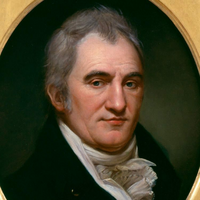
Joel Barlow (March 24, 1754– December 26, 1812) was an American poet, diplomat, and politician. In politics, he supported the French Revolution and was an ardent Jeffersonian. In his own time, Barlow was known especially for the epic Vision of Columbus, though modern readers may be more familiar with The Hasty-Pudding (1793). He also helped draft the Treaty of Tripoli in 1796, which includes the controversial and disputed phrase: “the Government of the United States of America is not, in any sense, founded on the Christian religion”.
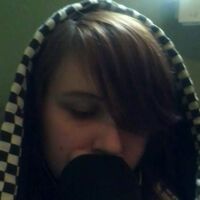
I started writing about a year ago, it helps me release my anger And sadness So I dont go for that blade... I was a cutter for almost four years,, I started at 14 and haven't cut for a couple months.. I tried everything to stop.. but nothing seemed to work. Someone told me to write my feelings down on paper then burn it, but I wanted to be creative, so I started to write my feelings down and it just became poetry.. Im not very good at it, but thats why im here. Please tell me what you think in the comments. Because I really want to improve :)
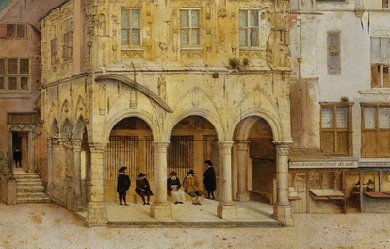
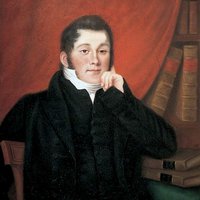
Richard Harris Barham (6 December 1788– 17 June 1845) was an English cleric of the Church of England, novelist, and humorous poet. He was known better by his nom de plume Thomas Ingoldsby. Life Richard Harris Barham was born in Canterbury. When he was seven years old his father died, leaving him a small estate, part of which was the manor of Tappington, mentioned so frequently in his later publications Ingoldsby Legends. At the age of nine he was sent to St Paul’s School, but his studies were interrupted by an accident which partially crippled his arm for life. Thus deprived of the power of vigorous bodily activity, he became a great reader and diligent student. During 1807 he entered Brasenose College, Oxford, intending at first to study for the Law. Circumstances, however, induced him to decide on a religious profession. In 1813 he was ordained and accepted a country curacy; he married during the next year, and in 1821 he obtained the appointment of minor canon of St. Paul’s Cathedral in London, where he served as a cardinal. Three years later he became one of the priests in ordinary of the King’s Chapel Royal. In 1826 Barham first contributed to Blackwood’s Magazine; and in 1837 he began to write for a recently initiated magazine, Bentley’s Miscellany, a series of tales (most of them metrical, some in prose) known as The Ingoldsby Legends. These became very popular. They were published in a collected form in three volumes between 1840 and 1847, and have since appeared in numerous editions. They may perhaps be compared to Hudibras. The stories are generally whimsical, but based on antiquarian learning. (There is also a collection of Barham’s miscellaneous poems, edited posthumously by his son, called The Ingoldsby Lyrics.) Barham was a Tory politically; yet he was a lifelong friend of the liberal Sydney Smith. Theodore Hook was one of his most intimate friends. Barham was a contributor to the Edinburgh Review and the Literary Gazette; he wrote articles for John Gorton’s Biographical Dictionary; and a novel, My Cousin Nicholas (1834). He died in London on 17 June 1845, after a long and painful illness. Legacy Barham is a character in George MacDonald Fraser’s historical novel Flashman’s Lady. His last poem As I laye a-thynkynge, was set to music by the English composer Edward Elgar, the song published in 1888. There is a pub in Burgate, Canterbury, near the cathedral, named The Thomas Ingoldsby. References Wikipedia—https://en.wikipedia.org/wiki/Richard_Barham_(priest)

raised by an amazing woman In Iowa.by the age of 38 I had lost my mother and father, my brother and sister, my half sister. I have dealt with alcoholism, drug addiction, cancer, HIV, suicide, and being gay. now 45 years old I find comfort and healing in my poetry writing.in spite of all my hardships I feel that I have a great attitude all due to the wonderful Mother who raised me.

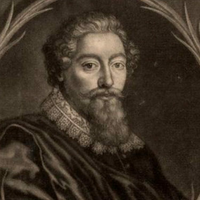
Francis Beaumont (1584– 6 March 1616) was a dramatist in the English Renaissance theatre, most famous for his collaborations with John Fletcher. Beaumont was the son of Sir Francis Beaumont of Grace Dieu, near Thringstone in Leicestershire, a justice of the common pleas. His mother was Anne, the daughter of Sir George Pierrepont (d. 1564), of Holme Pierrepont, and his wife Winnifred Twaits. Beaumont was born at the family seat and was educated at Broadgates Hall (now Pembroke College, Oxford) at age thirteen. Following the death of his father in 1598, he left university without a degree and followed in his father’s footsteps by entering the Inner Temple in London in 1600. Accounts suggest that Beaumont did not work long as a lawyer. He became a student of poet and playwright Ben Jonson; he was also acquainted with Michael Drayton and other poets and dramatists, and decided that was where his passion lay. His first work, Salmacis and Hermaphroditus, appeared in 1602. The 1911 edition of the Encyclopædia Britannica describes the work as “not on the whole discreditable to a lad of eighteen, fresh from the popular love-poems of Marlowe and Shakespeare, which it naturally exceeds in long-winded and fantastic diffusion of episodes and conceits.” In 1605, Beaumont wrote commendatory verses to Jonson’s Volpone. Beaumont’s collaboration with Fletcher may have begun as early as 1605. They had both hit an obstacle early in their dramatic careers with notable failures; Beaumont’s The Knight of the Burning Pestle, first performed by the Children of the Blackfriars in 1607, was rejected by an audience who, the publisher’s epistle to the 1613 quarto claims, failed to note “the privie mark of irony about it;” that is, they took Beaumont’s satire of old-fashioned drama as an old-fashioned drama. The play received a lukewarm reception. The following year, Fletcher’s Faithful Shepherdess failed on the same stage. In 1609, however, the two collaborated on Philaster, which was performed by the King’s Men at the Globe Theatre and at Blackfriars. The play was a popular success, not only launching the careers of the two playwrights but also sparking a new taste for tragicomedy. According to a mid-century anecdote related by John Aubrey, they lived in the same house on the Bankside in Southwark, “sharing everything in the closest intimacy.” About 1613 Beaumont married Ursula Isley, daughter and co-heiress of Henry Isley of Sundridge in Kent, by whom he had two daughters, one posthumous. He had a stroke between February and October 1613, after which he wrote no more plays, but was able to write an elegy for Lady Penelope Clifton, who died 26 October 1613. Beaumont died in 1616 and was buried in Westminster Abbey. Although today Beaumont is remembered as a dramatist, during his lifetime he was also celebrated as a poet. Beaumont’s plays It was once written of Beaumont and Fletcher that “in their joint plays their talents are so... completely merged into one, that the hand of Beaumont cannot clearly be distinguished from that of Fletcher.” Yet this romantic notion did not stand up to critical examination. In the seventeenth century, Sir Aston Cockayne, a friend of Fletcher’s, specified that there were many plays in the 1647 Beaumont and Fletcher folio that contained nothing of Beaumont’s work, but rather featured the writing of Philip Massinger. Nineteenth– and twentieth-century critics like E. H. C. Oliphant subjected the plays to a self-consciously literary, and often subjective and impressionistic, reading—but nonetheless began to differentiate the hands of the collaborators. This study was carried much farther, and onto a more objective footing, by twentieth-century scholars, especially Cyrus Hoy. Short of absolute certainty, a critical consensus has evolved on many plays in the canon of Fletcher and his collaborators; in regard to Beaumont, the schema below is among the least controversial that has been drawn. By Beaumont alone: The Knight of the Burning Pestle, comedy (performed 1607; printed 1613) The Masque of the Inner Temple and Gray’s Inn, masque (performed 20 February 1613; printed 1613?) With Fletcher: The Woman Hater, comedy (1606; 1607) Cupid’s Revenge, tragedy (c. 1607–12; 1615) Philaster, or Love Lies a-Bleeding, tragicomedy (c. 1609; 1620) The Maid’s Tragedy, tragedy (c. 1609; 1619) A King and No King, tragicomedy (1611; 1619) The Captain, comedy (c. 1609–12; 1647) The Scornful Lady, comedy (ca. 1613; 1616) Love’s Pilgrimage, tragicomedy (c. 1615–16; 1647) The Noble Gentleman, comedy (licensed 3 February 1626; 1647) Beaumont/Fletcher plays, later revised by Massinger: Thierry and Theodoret, tragedy (c. 1607?; 1621) The Coxcomb, comedy (c. 1608–10; 1647) Beggars’ Bush, comedy (c. 1612–13?; revised 1622?; 1647) Love’s Cure, comedy (c. 1612–13?; revised 1625?; 1647) Because of Fletcher’s highly distinctive and personal pattern of linguistic preferences and contractional forms (ye for you, 'em for them, etc.), his hand can be distinguished fairly easily from Beaumont’s in their collaborations. In A King and No King, for example, Beaumont wrote all of Acts I, II, and III, plus scenes IV.iv and V.ii and iv; Fletcher wrote only the first three scenes in Act IV (IV, i-iii) and the first and third scenes in Act V (V, i and iii)—so that the play is more Beaumont’s than Fletcher’s. The same is true of The Woman Hater, The Maid’s Tragedy, The Noble Gentleman, and Philaster. On the other hand, Cupid’s Revenge, The Coxcomb, The Scornful Lady, Beggar’s Bush, and The Captain are more Fletcher’s than Beaumont’s. In Love’s Cure and Thierry and Theodoret, the influence of Massinger’s revision complicates matters; but in those plays too, Fletcher appears to be the majority contributor, Beaumont the minority. References Wikipedia—https://en.wikipedia.org/wiki/Francis_Beaumont
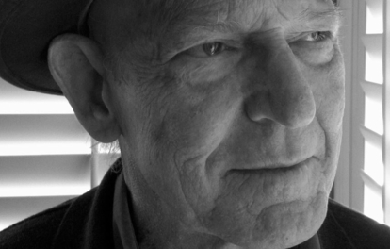
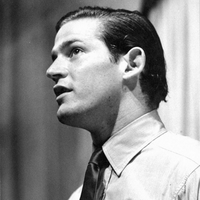
William Craig Berkson (August 30, 1939– June 16, 2016) was an American poet, critic, and teacher who was active in the art and literary worlds from his early twenties on. Early life and education Born in New York City on August 30, 1939, Bill Berkson grew up on Manhattan’s Upper East Side, the only child of Seymour Berkson, general manager of International News Service and later publisher of the New York Journal American, and the fashion publicist Eleanor Lambert. He attended The Day School of the Church of the Heavenly Rest and transferred to Trinity School in 1945. He graduated from Lawrenceville School in 1957. He dropped out of Brown University to return to New York after his father died. He studied poetry at The New School for Social Research with Kenneth Koch. He attended Columbia University and New York University’s Institute of Fine Arts. Having begun writing poetry at Lawrenceville, encouraged there by such teachers as John Silver and the eminent Emily Dickinson scholar, Thomas H. Johnson, he went on to study short story writing with John Hawkes and prosody with S. Foster Damon at Brown. But his full commitment to poetry was prompted under the tutelage of Kenneth Koch in spring, 1959 at the New School for Social Research. It was also through Koch that he was introduced to the poetry and arts community loosely termed the New York School, which in turn led to close friendships with Frank O’Hara and such senior artists as Philip Guston and Alex Katz, as well as with poets and artists of his own generation such as Ron Padgett, Joe Brainard, George Schneeman, Ted Berrigan, Anne Waldman, Jim Carroll and others. Career After leaving Columbia in 1960, Berkson started work as an editorial associate at ARTnews, where he continued for the next three years. During the remainder of the 1960s, he was a regular contributor to both ARTnews and Arts, guest editor at the Museum of Modern Art, an associate producer of a program on art for public television, and taught literature and writing workshops at the New School for Social Research and Yale University. After moving to Northern California in 1970, Berkson began editing and publishing a series of poetry books and magazines under the Big Sky imprint and taught regularly in the California Poets in the Schools program. In 1975 he married the artist Lynn O’Hare; their son Moses Edwin Clay Berkson was born in Bolinas, California, on January 23, 1976. He also has a daughter, Siobhan O’Hare Mora Lopez (b. 1969), and three grandchildren, Henry Berkson and Estella and Lourdes Mora Lopez. His friendships during his California years included those with; Joanne Kyger, Duncan McNaughton and Philip Whalen. Berkson is the author of some twenty collections and pamphlets of poetry—including most recently Portrait and Dream: New & Selected Poems and Expect Delays, both from Coffee House Press. His poems have also appeared in many magazines and anthologies and have been translated into French, Russian, Hungarian, Dutch, Czechoslovakian, Romanian, Italian, German and Spanish. Les Parties du Corps, a selection of his poetry translated into French, appeared from Joca Seria, Nantes, in 2011. Other recent books are What’s Your Idea of a Good Time?: Letters & Interviews 1977-1985 with Bernadette Mayer; BILL with drawings by Colter Jacobsen; Ted Berrigan with George Schneeman; Not an Exit with Léonie Guyer and Repeat After Me with John Zurier. Beside the aforementioned collaborations, he executed extensive projects with visual artists Philip Guston, Alex Katz, Joe Brainard, Lynn O’Hare and Greg Irons, as well as with the poets Frank O’Hara, Larry Fagin, Ron Padgett, Anne Waldman and Bernadette Mayer. In the mid-1980s, Berkson resumed writing art criticism on a regular basis, contributing monthly reviews and articles to Artforum from 1985 to 1991; he became a corresponding editor for Art in America in 1988 and contributing editor for artcritical.com and has also written frequently for such magazines as Aperture, Modern Painters, Art on Paper and others. In 1984, he began teaching art history and literature and organizing the public lectures program at the San Francisco Art Institute, where he also served as interim dean in 1990 and Director of Letters and Science from 1993 to 1998. He retired from SFAI in 2008 and later held the position of Professor Emeritus. During the same period, he was also on the visiting faculty of Naropa Institute, California College of Arts and Crafts and Mills College. Berkson continued until the end of his life to lecture widely in colleges and universities. He published three collections of art criticism, to date, the last being For the Ordinary Artist: Short Reviews, Occasional Pieces & More. As a sometime curator, he organized or co-curated such exhibitions as Ronald Bladen: Early and Late (SFMoMA), Albert York (Mills College), Why Painting I & II (Susan Cummins Gallery), Homage to George Herriman (Campbell-Thiebaud Gallery), Facing Eden: 100 years of Northern California Landscape Art (M.H. de Young Museum), George Schneeman (CUE Foundation), Gordon Cook: Out There (Nelson Gallery, University of California, Davis), George Schneeman in Italy (Instituto di Cultura Italiano, San Francisco), and, with Ron Padgett, A Painter and His Poets: The Art of George Schneeman (Poets House, New York). In 1998, he married the curator Constance Lewallen, with whom he lived in the Eureka Valley section of San Francisco. Berkson died of a heart attack in San Francisco on June 16, 2016 at the age of 76. Berkson’s archive of literary, artistic and other materials, including extensive correspondence and collaborations with O’Hara, Guston, Brainard, Mayer and others through the years is maintained in the Special Collections at the Thomas J. Dodd Research Center, University of Connecticut, Storrs. Bibliography * Poetry * Saturday Night: Poems 1960-61 (Tibor de Nagy, 1961; reprint, Sand Dollar, 1975) * Shining Leaves (Angel Hair, 1969) * Recent Visitors (with drawings by George Schneeman) (Angel Hair, 1973) * Enigma Variations (with drawings by Philip Guston) (Big Sky, 1975) * 100 Women (Simon & Schuchat, 1975) * Blue Is the Hero (Poems 1960-75) (L, 1976) * Red Devil (Smithereens Press, 1983) * Start Over (Tombouctou Books, 1983) * Lush Life (Z Press, 1984) * A Copy of the Catalogue (Labyrinth, Vienna, 1999) * Serenade (Poetry & Prose 1975-1989) (Zoland Books, 2000) * Fugue State (Zoland Books, 2001) * 25 Grand View (San Francisco Center for the Book, 2002) * Gloria (with etchings by Alex Katz) (Arion Press, 2005) * Parts of the Body: a 1970s/80s scrapbook (Fell Swoop, 2006) * Same Here, online chapbook (Big Bridge, 2006) * Our Friends Will Pass Among You Silently (The Owl Press, 2007) * Goods and Services (Blue Press, 2008) * Portrait and Dream: New & Selected Poems (Coffee House Press, 2009) * Lady Air (Perdika Press, 2010) * Parties du Corps, trans. Olivier Brossard, Vincent Broqua et alia (Joca Seria, Nantes, 2011) * Snippets (Omerta, 2014) * Expect Delays (Coffee House Press, 2014) * Invisible Oligarchs (Ugly Duckling Presse, 2016) * Collaborations * Recent Visitors with Joe Brainard (Boke Press, 1971) * Hymns of St. Bridget with Frank O’Hara (Adventures in Poetry, 1975) * Ants with drawings by Greg Irons (Arif, 1975) * Two Serious Poems & One Other with Larry Fagin (Big Sky, 1972) * Hymns of St. Bridget & Other Writings with Frank O’ Hara (The Owl Press, 2001) * The World of Leon with Ron Padgett, Larry Fagin, & Michael Brownstein (Big Sky, 1976) * BILL, with Colter Jacobsen (Gallery 16, 2008) * Ted Berrigan, with George Schneeman (Cuneiform Press. 2009) * Not an Exit, with Léonie Guyer (Jungle Garden Press, 2010) * Repeat After Me, with John Zurier (Gallery Paule Anglim, 2011) * Amsterdam Souvenirs, with Joanne Kyger (Blue Press, 2016) * Memoirs * Young Manhattan (w/ Anne Waldman) (Erudite Fangs, 1999) * The Far Flowered Shore: Japan 2006/2010 (Cuneiform Press, 2013) * Since When [memoirs, forthcoming] * Prose * What’ s Your Idea of a Good Time?: Letters & Interviews (w/ Bernadette Mayer) (Tuumba Press, 2006) * Criticism * The Sweet Singer of Modernism & Other Art Writings 1985-2003 (Qua Books, 2004) * Sudden Address: Selected Lectures 1981-2006 (Cuneiform Press, 2007) * For The Ordinary Artist: Short Reviews, Interviews, Occasional Pieces & More (BlazeVox, 2010) * "Hands On/Hands Off," in The Art of Collaboration, Cuneiform Press, 2015 * “New Energies: Philip Guston Among the Poets,” in Philip Guston/ Drawings for Poets (Sievekind Verlag, 2015) * “Empathy and Sculpture,” in Joel Shapiro (Craig Starr Gallery, 2014) * “Eclipse, the View from the Cave” in Larry Deyab, 2014 * “Canan Tolon’s Open Limits,” in Cana Tolon (Parasol Unit, London, 2013) * “Larry Thomas’s Natural Wonders,” in Larry Thomas (Sonoma Valley Art Museum, 2012) * “Piero, Guston and their Followers,” Philip Guston/ Roma: a symposium (New York Review of * Books, 2014) * “ The Elements of Drawing” in Wayne Thiebaud: Still-Life Drawings (Paul Thiebaud Gallery, 2010) * “ Dean Smith in Action,” Dean Smith, (Gallery Paule Anglim San Francisco) * “ Dewey Crumpler’ s Metamorphoses,” in Dewey Crumpler (California African American Museum, Los Angeles, 2008) * “ Seeing with Bechtle,” in Robert Bechtle/ Plein Air (Gallery Paule Anglim, 2007) * “ On Adelie Landis Bischoff” (Salander O’ Reilly, 2006) * “ Ultramodern Park,” in David Park: the 1930s and 40s, 2006 * “ Introduction,” in Jo Babcock, The Invented Camera, 2005 * “ A New Luminist,” in Tim Davis, Permanent Collection, 2005 * “ George’ s House of Mozart,” in Painter Among Poets: The Collaborative Art of George Schneeman (Granary books, 2004) * “ George Schneeman’ s Italian Hours,” CUE Art Foundation, 2003 * “ Without The Rose: Jay DeFeo & 16 Americans,” in Jay DeFeo & The Rose (University of California Press, 2003) * “ Pyramid and Shoe” (Guston and Comics) in Philip Guston (Thames & Hudson, 2003) * “ The Abstract Bischoff,” Salander-O’ Reilly, 2002 * “ DeKooning, With Attitude,” in Writers on Artists, Modern Painters, 2002 * “ Spellbound” (Vija Celmins), McKee Gallery, 2002 * “ Warhol’ s History Lesson,” John Berggruen, 2001 * “ Join the Aminals” (Tom Neely), Jernigan-Wicker, 2001 * “ What the Ground Looks Like” in Aerial Muse: the Art of Yvonne Jacquette, Hudson Hills / Stanford Art Museum, 2001 * “ The Searcher” in Elmer Bischoff, University of California Press, 2001 * “ Ceremonial Surfaces” in Celebrating Modern Art: The Anderson Collection, San Francisco Museum of Modern Art, 2000 * “ Existing Light” in Henry Wessel, Bransten Gallery, 2000 * “Jackson Pollock: The Colored Paper Drawings”, Washburn, 2000 * “ The Portraitist” in Elaine de Kooning / Portraits, Salander O’ Reilly Gallery, New York, 1999 * “ Hung Liu, Action Painter,” in Hung Liu, Rena Bransten Gallery, San Francisco,1998 * “ Things in Place,” in Table Tops: Morandi to Mapplethorpe, California Center for the Arts, Escondido, CA, 1997 * “ Autograph Hounds,” in Hall of Fame of Halls of Fame, Yerba Buena Center for the Arts, San Francisco, 1997 * Homage to George Herriman, Campbell-Thiebaud Gallery, 1997 * “ The Romance of the Rose,” in Jay DeFeo, Moore College of Art, 1996 * “ Changes like the Weather,” in Facing Eden, University of California Press, 1995 * “ The Ideal Reader,” in Philip Guston: Poem Pictures, Addison Gallery, 1994 * “ Poet and Painter Coda,” in Franz Kline, Tàpies Foundation/Tate Gallery, 1994 * “ Apparition as Knowledge” in Deborah Oropallo, Wirtz Gallery, 1993 * “ The Thiebaud Papers,” in Wayne Thiebaud: Vision and Revision, Fine Arts Museums, 1992 * “Air and Such” in Biotherm by Frank O’Hara, Arion Press, 1990 * Ronald Bladen: Early and Late, SFMOMA, 1991 * Editor * In Memory of My Feelings by Frank O’Hara (posthumous collection of poetry, illustrated by 30 American artists) (The Museum of Modern Art, New York, 1967; reprint 2005) * Best & Company, a one-shot anthology of art & literature, 1969 * Alex Katz (with Irving Sandler) (Praeger, 1971) * Big Sky magazine (12 issues) and books (20 volumes), 1971–78 * Homage to Frank O’Hara (ith/ Joe LeSueur) (Big Sky, 1978; reprint * Creative Arts, 1980; 3rd edition, Big Sky, 1988) * The World Record (with Bob Rosenthal), LP of poets’ readings, St. Marks Poetry Project, 1980. * Art Journal, Special de Kooning Issue (with Rackstraw Downes), 1989 * What’s With Modern Art? By Frank O’ Hara (Mike & Dale’ s Press, 1998) * Anthologies * The Young American Poets,10 American Poets, The Young American Writers, The World Anthology, An Anthology of New York Poets, Best & Company, On the Mesa, Calafia, One World Poetry, Another World, Poets & Painters, The Ear, Aerial, Broadway, Broadway 2, Hills/Talks, Wonders, Up Late: American Poetry Since 1970, Best Minds, Out of This World, Reading Jazz, A Norton Anthology of Postmodern American Poetry, American Poets Say Goodbye to the 20th Century, Euro-San Francisco Poetry Festival, The Blind See Only this World, The Angel Hair Anthology, Evidence of the Paranormal, Enough, The New York Poets II, Bay Area Poetics, Hom(m)age to Whitman, POEM, The i.e. Reader, Nuova Poesia Americana: New York, A Norton Anthology of Postmodern American Poetry, Second Edition. * 'Other * Recordings of poetry on Disconnected (Giorno Poetry Systems) and The World Record (St Marks Poetry Project); Daniel Kane, All Poets Welcome; and in the American Poetry Archive (San Francisco State University), PennSound (University of Pennsylvania) & elsewhere. * Poetry translated into French, Italian, Turkish, Spanish, German, Dutch, Romanian, Arabic, Czechoslovakian and Hungarian. * Art reviews & essays regularly contributed to ARTnews 1961-64; Arts 1964-66; Art in America 1980- ; Artforum 1985-1990; Modern Painters, 1998–2003; artcritical.com 2009. Awards * * Dylan Thomas Memorial Poetry Award, The New School for Social Research, 1959 * Poets Foundation Grant, 1968 * Yaddo Fellowship, 1968 * Creative Writing Fellowship in Poetry, National Endowment for the Arts, 1980 * Briarcombe Fellowship, 1983 * Marin Arts Council Poetry Award, 1987 * Artspace Award for New Writing in Art Criticism, 1990 * Visiting Artist/Scholar, American Academy in Rome, 1991 * Fund for Poetry Grant, 1994, 2001 * San Francisco Public Library Laureate, 2001 * Guest of Honor, Small Press Distribution Open House, 2004 * Paul Mellon Distinguished Fellow (lecture), Skowhegan School of Painting and Sculpture, 2006 * “Goldie” for Literature, the San Francisco Bay Guardian, 2008 * Balcones Poetry Prize, Austin, Texas, 2010 * Coordinating Council of Literary Magazines (CCLM) grants for publishing, 1972, 1974, 1976, 1978 * Honorable Mention, Editor’s Fellowship, CCLM, 1979 * NEA, Small Press Publishing Grants, 1975, 1977 References Wikipedia—https://en.wikipedia.org/wiki/Bill_Berkson
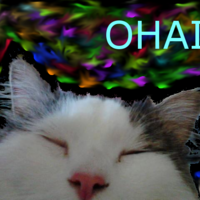
Hi, everyone. I've written poetry for almost 25 years now (since I was 14). My influences are predominantly rap and heavy metal songs. Eminem and Iron Maiden are amongst my favorites. While most people are driven by the rhythm or melody of a song, I pay lots of attention to the lyrics. I started out writing classical poetry, but when I hit my mid-thirties I began to develop a penchant for writing in more of a rap style. Many of my poems are soulful, raw, no-nonsense reflections of my views and observations, but not all. I have been hesitant about sharing them for well over a decade. It took me a long time to accept what I am: a poet. P.S. The pic is of my cat, Rocky =^.^=
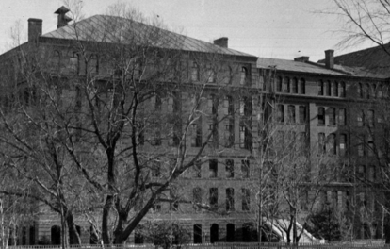
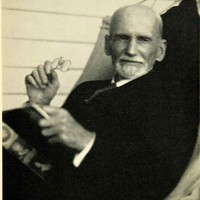
Gamaliel Bradford (October 9, 1863– April 11, 1932) was an American biographer, critic, poet, and dramatist. Born in Boston, Massachusetts, the sixth of seven men called Gamaliel Bradford in unbroken succession, of whom the first, Gamaliel Bradford, was a great-grandson of Governor William Bradford of the Plymouth Colony. Bradford attended Harvard University briefly with the class of 1886, then continued his education with a private tutor, but is said to have been educated “mainly by ill-health and a vagrant imagination.” As an adult, Bradford lived in Wellesley, Massachusetts. The building and student newspaper for the Wellesley High School (where Sylvia Plath received her secondary school education) were named after Gamaliel Bradford. The town changed the name of the building to Wellesley High School, but the newspaper maintains Bradford’s name. In his day Bradford was regarded as the “Dean of American Biographers.” He is acknowledged as the American pioneer of the psychographic form of written biographies, after the style developed by Lytton Strachey. Despite suffering poor health during most of his life, Bradford wrote 114 biographies over a period of 20 years. Bibliography * A Pageant of Life (poetry) * A Prophet of Joy (poetry) * Shadow Verses (poetry) * Unmade in Heaven (drama) * Lee, the American * American Portraits, 1875-1900 * Union Portraits * Confederate Portraits, 1914. * Portraits of Women * Portraits of American Women * Saints and Sinners * A Naturalist of Souls: Studies in Psychography * Life and I (autobiography) * Elizabethan Women, 1936. Articles * “Government in the United States,” The Contemporary Review, Vol. XLVIII, July/December 1885. * “Municipal Government,” Scribners, October 1887. * “Journalism and Permanence,” The North American Review, August 1915. * “A Confederate Pepys,” The American Mercury, December 1925. References Wikipedia—https://en.wikipedia.org/wiki/Gamaliel_Bradford_(biographer)



